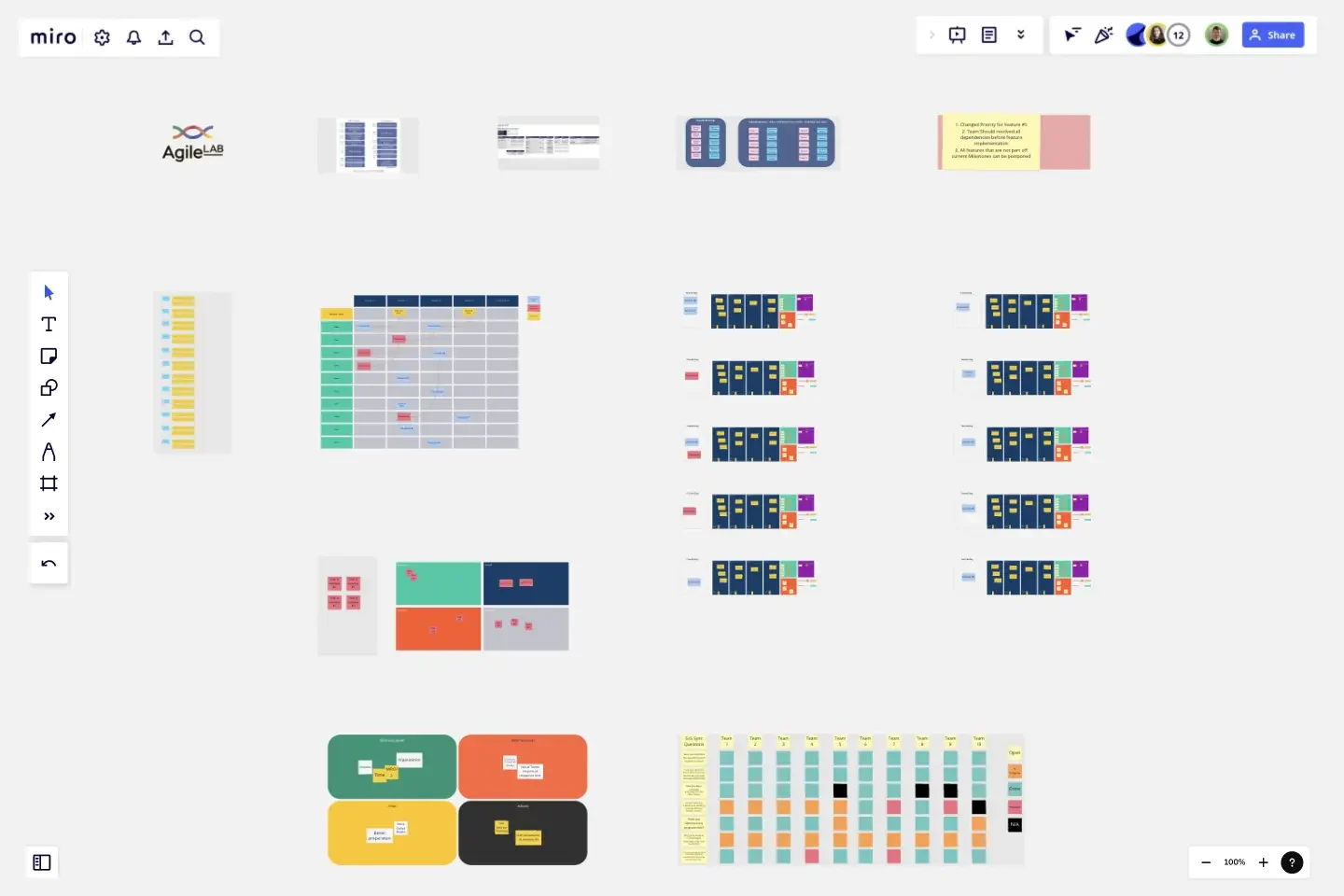SAFe PI Planning
Current Template will help you to save time on preparation and increase the levels of event Facilitation.
Introduction to PI Planning: A Quick Overview Program Increment (PI) Planning is a cadence-based, face-to-face event that serves as the heartbeat of the Agile Release Train (ART), aligning all the teams on the ART to a shared mission and Vision. PI planning is essential to SAFe: If you are not doing it, you are not doing SAFe.
It may not always be practical for the entire Agile Release Train (ART) to collocate however, and in our current times COVID-19 has created a situation where this isn’t an option. While physical face to face planning has its benefits, the unwritten SAFe ‘rule’ is “the people who do the work plan the work.” When physical presence is not possible, real time, concurrent, virtual, face to face planning has now proven to be effective. Indeed many ARTs have been successful in creating a hybrid situation where several teams join remotely.
Tooling is the cornerstone of distributed PI planning and several different types of PI Planning tools are required in combination to support the activities that take place.
Here you have all you need to facilitate PI Planning:
Program Backlog
Program Board
Team Board
Program Risks
SoS Checklist
Areas for Agenda, Logistic, Management Adjustments
Planning Retrospective template
This template was created by Maxim Batalin.
Get started with this template right now.
Quick Retrospective Template
Works best for:
Education, Retrospectives, Meetings
A retrospective template empowers you to run insightful meetings, take stock of your work, and iterate effectively. The term “retrospective” has gained popularity over the more common “debriefing” and “post-mortem,” since it’s more value-neutral than the other terms. Some teams refer to these meetings as “sprint retrospectives” or “iteration retrospectives,” “agile retrospectives” or “iteration retrospectives.” Whether you are a scrum team, using the agile methodology, or doing a specific type of retrospective (e.g. a mad, sad, glad retrospective), the goals are generally the same: discovering what went well, identifying the root cause of problems you had, and finding ways to do better in the next iteration.
Team´s High Performance Tree
Works best for:
Agile, Meetings, Workshops
The Team's High Performance Tree is a visual representation of the factors influencing team performance. It provides a structured framework for identifying strengths, weaknesses, and areas for improvement. By visualizing factors such as communication, collaboration, and leadership, this template enables teams to assess their performance and develop strategies for enhancement, empowering them to achieve peak performance and deliver exceptional results.
Scrum Puzzle Iteration Game
Works best for:
Agile, Games, Icebreaker
The Scrum Puzzle Iteration Game is a hands-on activity that reinforces Scrum principles and practices. By simulating iterative development cycles through puzzle-solving, teams learn the importance of collaboration, adaptability, and continuous improvement. This template provides a fun and engaging way to internalize Scrum concepts and enhance teamwork, empowering Agile practitioners to deliver value more effectively.
Penny Game
Works best for:
Agile
The Penny Game is a simulation exercise that illustrates the impact of batch size and work in progress on cycle time and throughput. By tracking the flow of pennies through a production system, teams learn how to identify bottlenecks, optimize processes, and improve efficiency. This template offers a practical way to explore Lean principles and drive continuous improvement, empowering teams to streamline their workflow and deliver value more predictably.
Hiring Process Template
Works best for:
Operations, Org Charts, Kanban Boards
Having a hiring process in place simplifies that process each step of the way, from recruiting for the position to making finalizing offers. This simple, effective template will give you a straightforward, high-level view of where employees are as they move from applicant to new hire.
DMAIC Analysis Template
Works best for:
Agile Methodology, Design Thinking, Operations
Processes might not seem like the funnest thing to dive into and examine, but wow can it pay off—a more efficient process can lead to serious cost savings and a better product. That’s what DMAIC analysis does. Developed as part of the Six Sigma initiative, DMAIC is a data-driven quality strategy for streamlining processes and resolving issues. The technique is broken into five fundamental steps that are followed in order: Define, Measure, Analyze, Improve, and Control.
